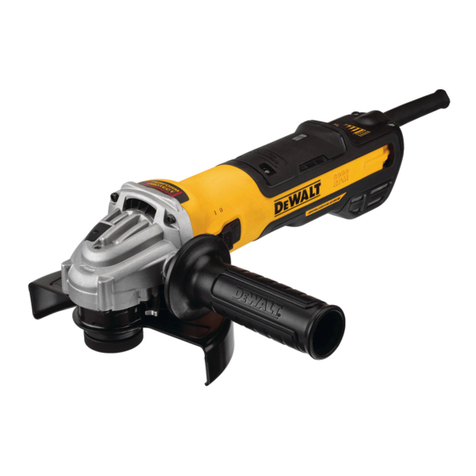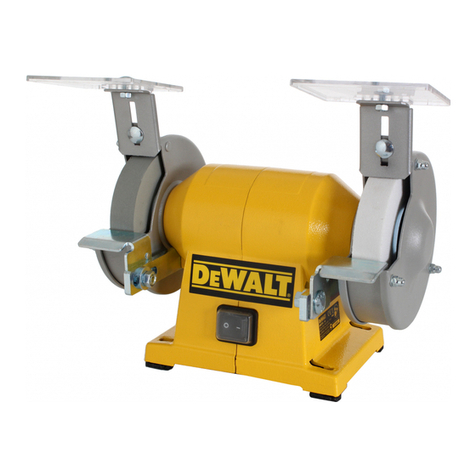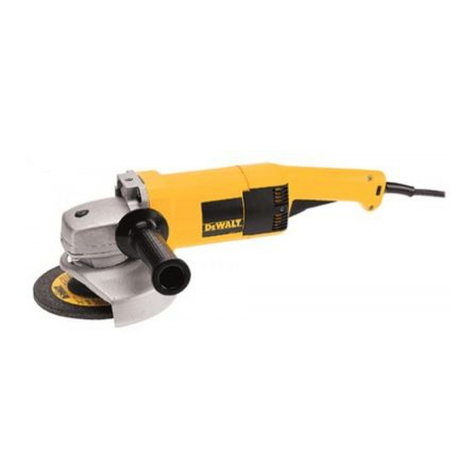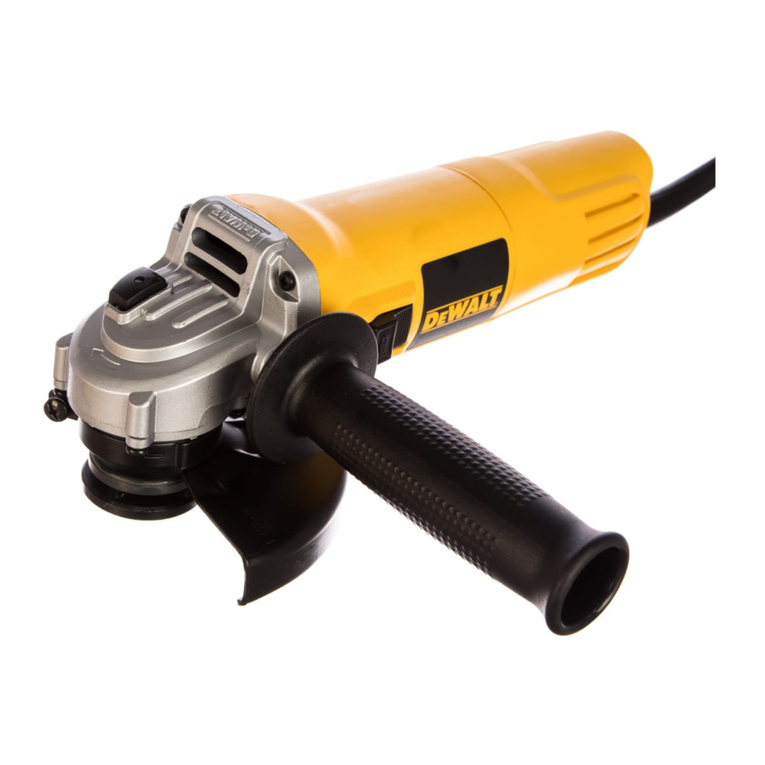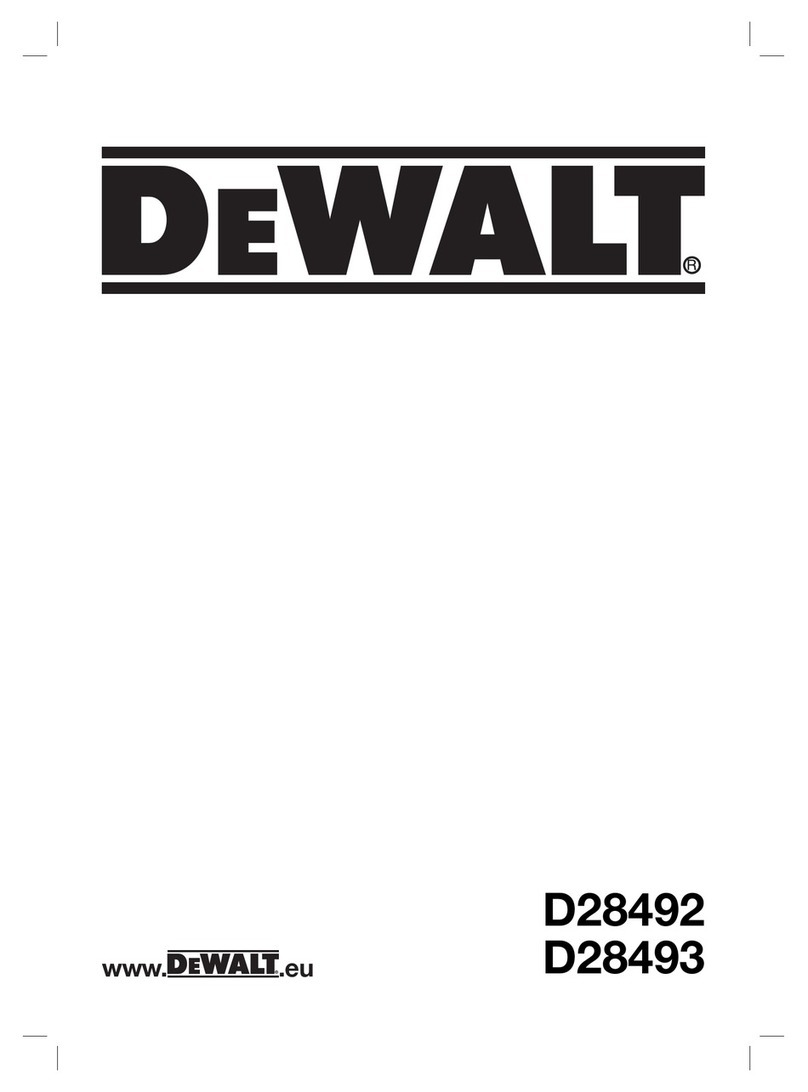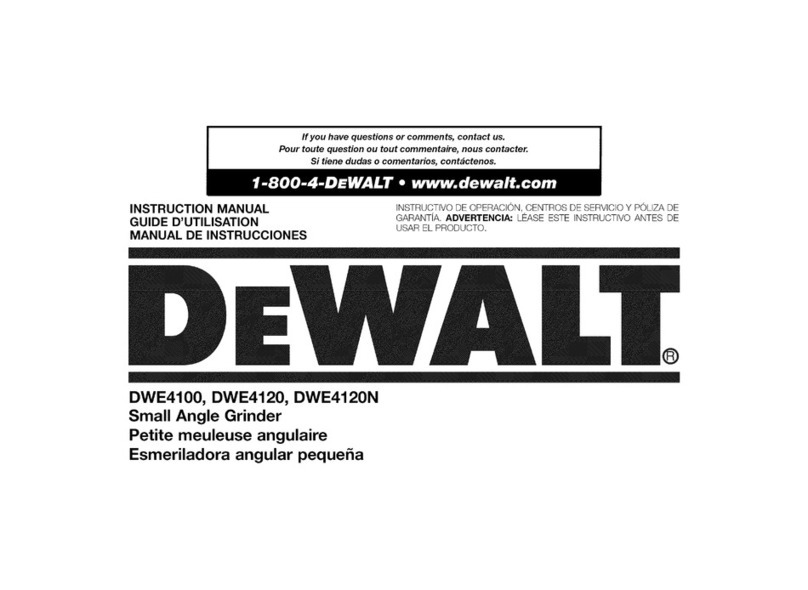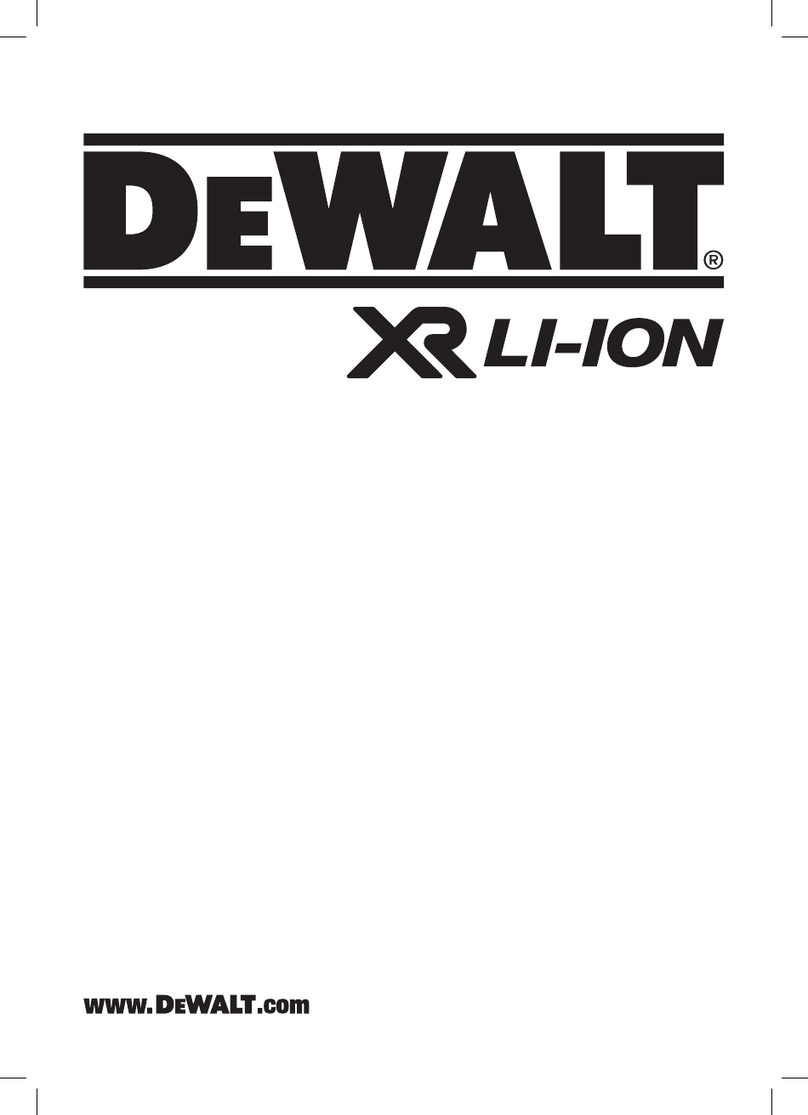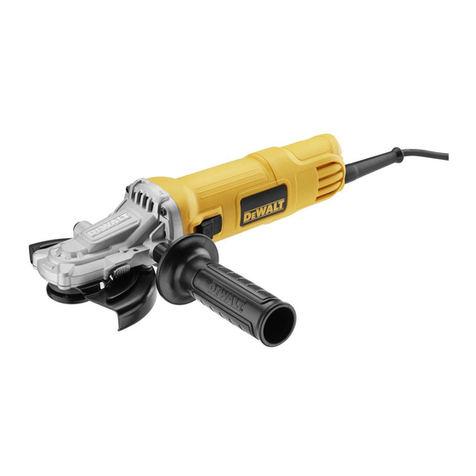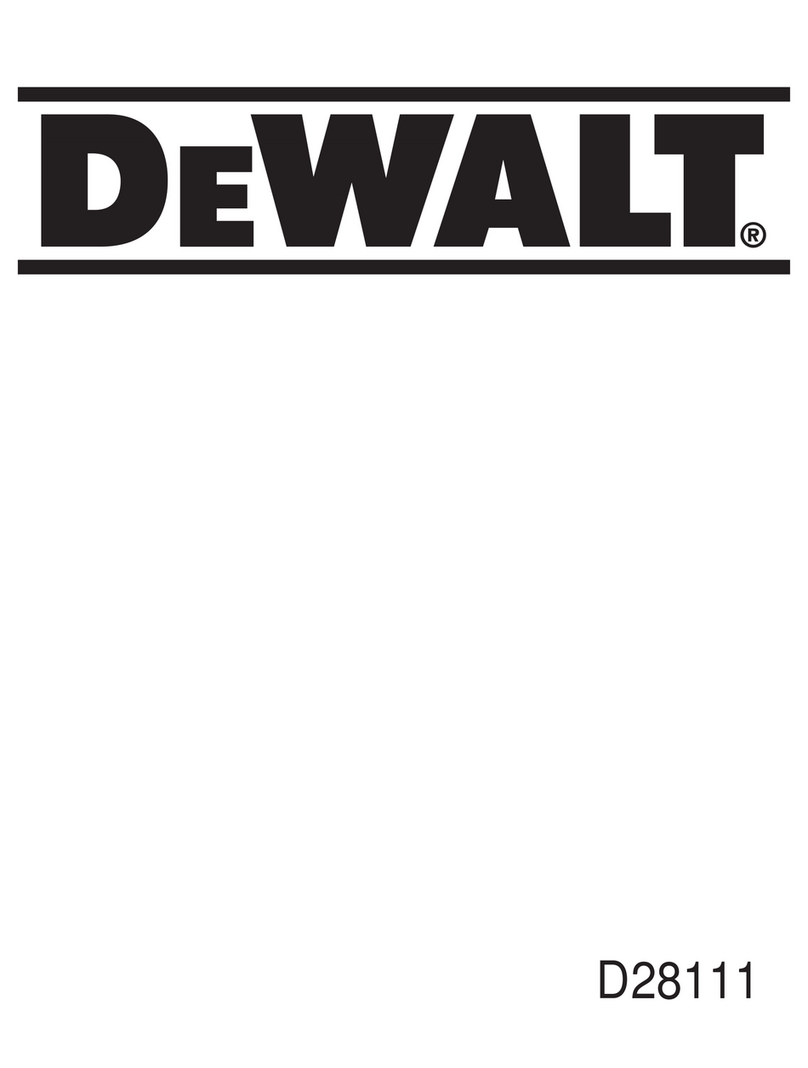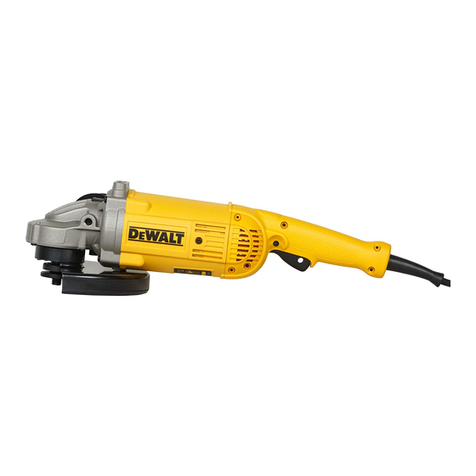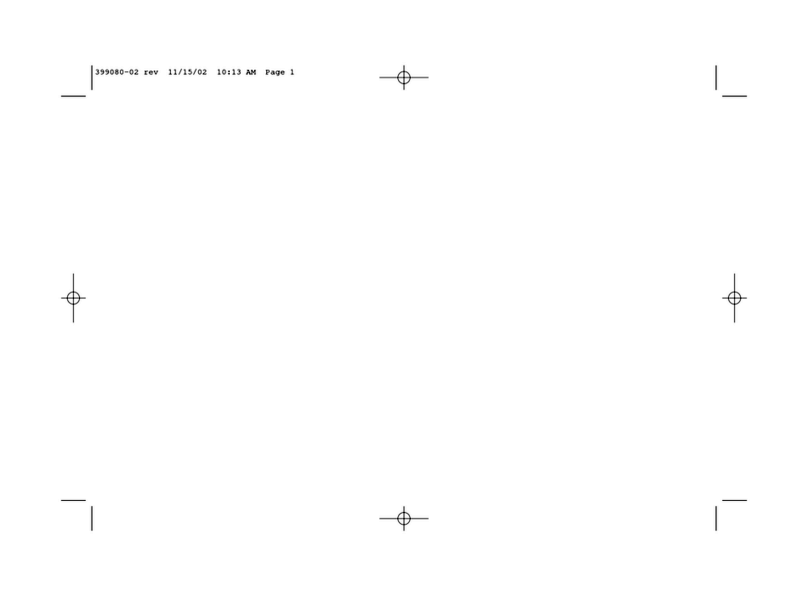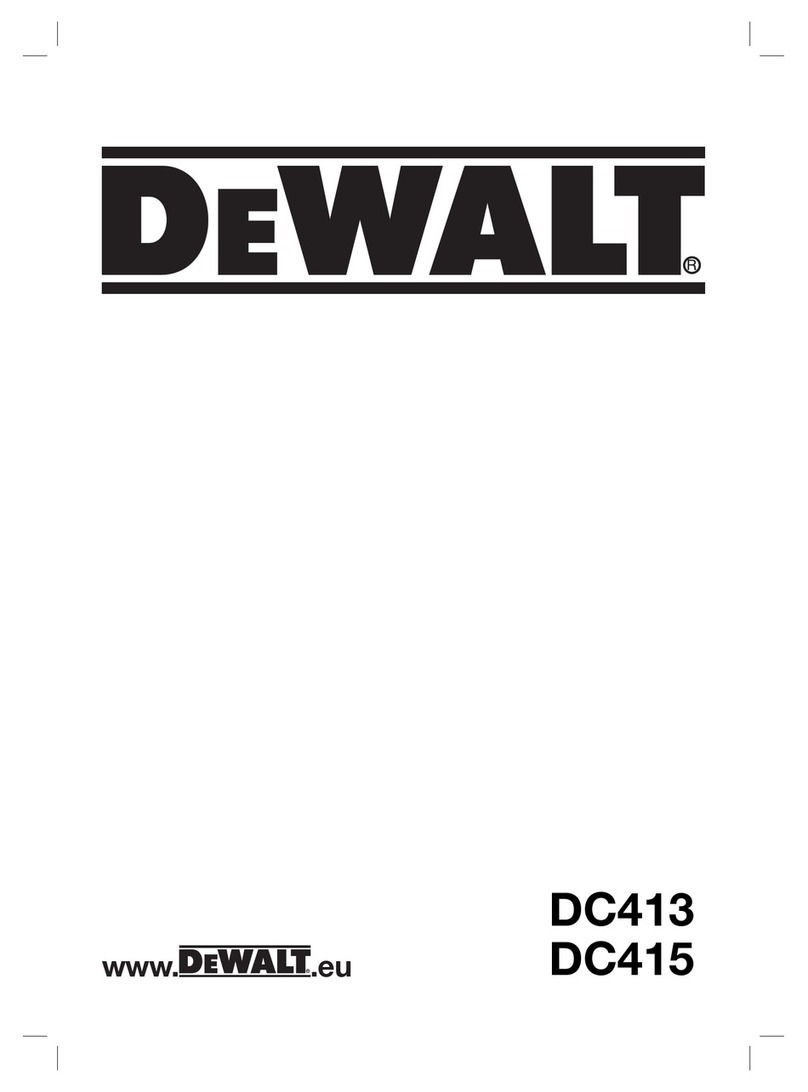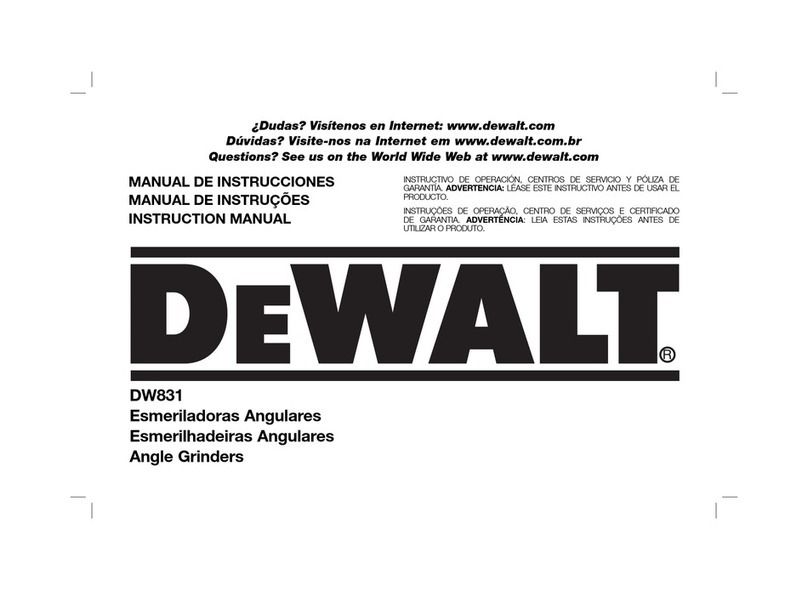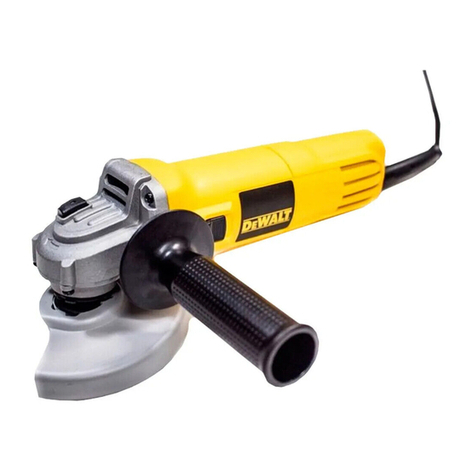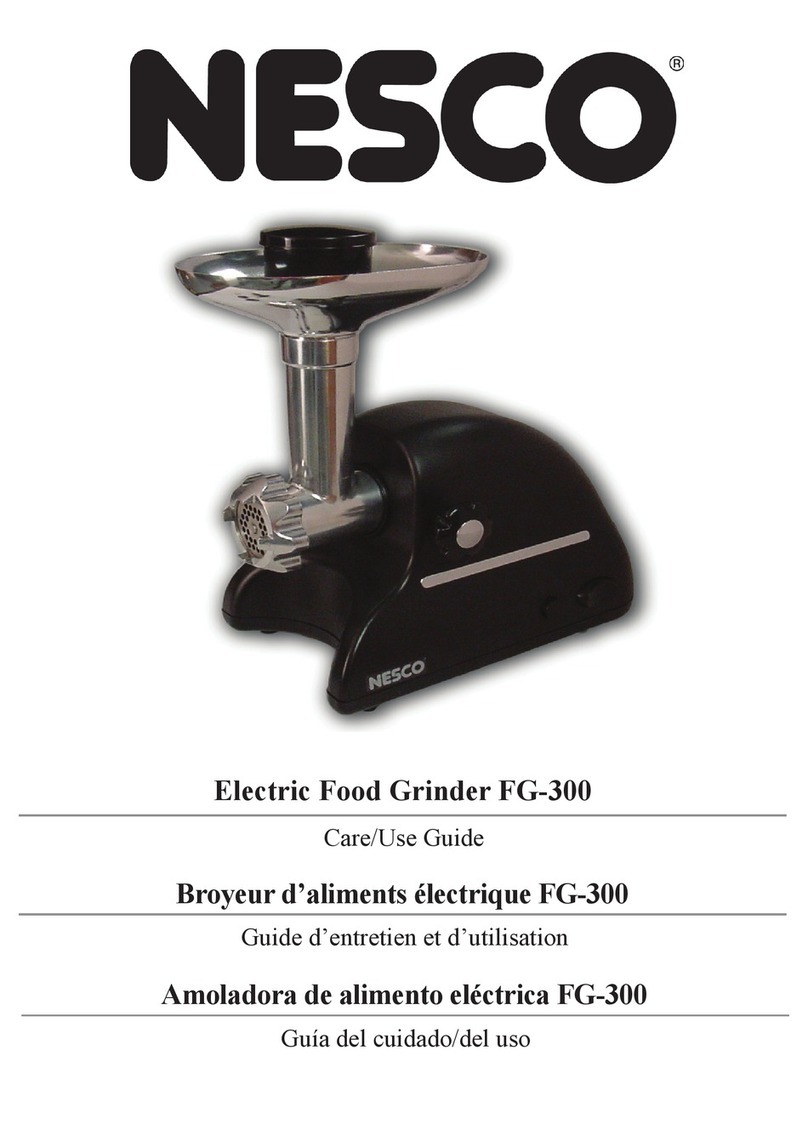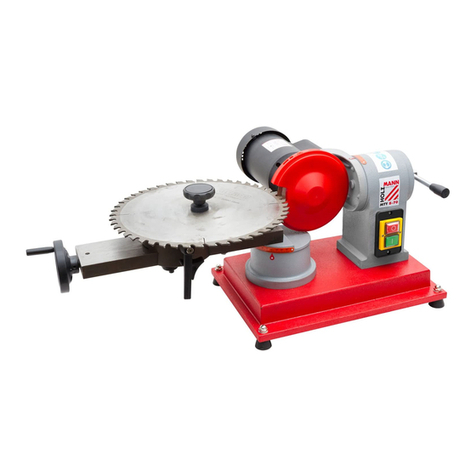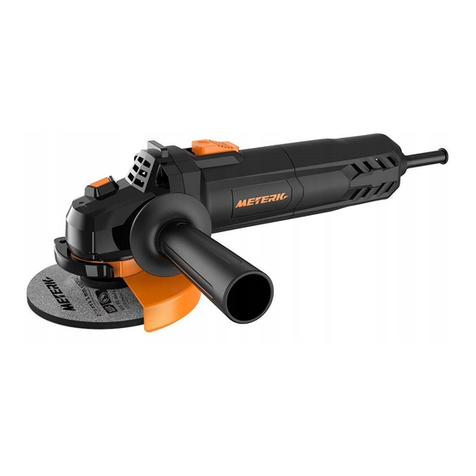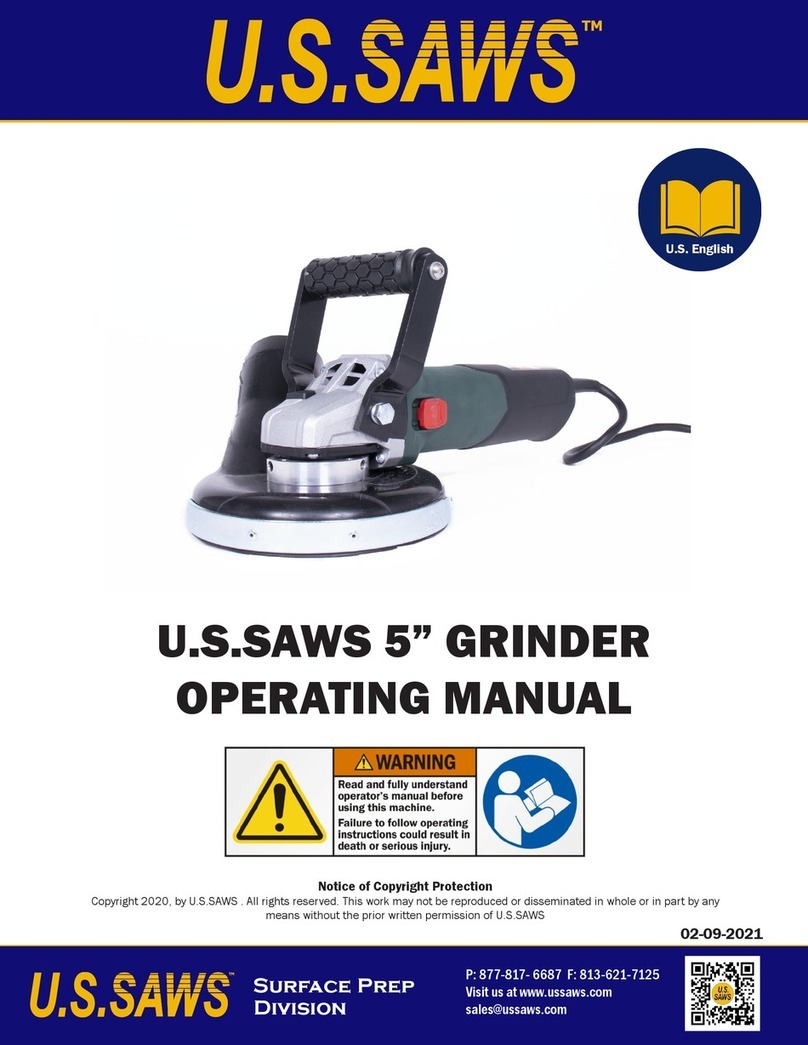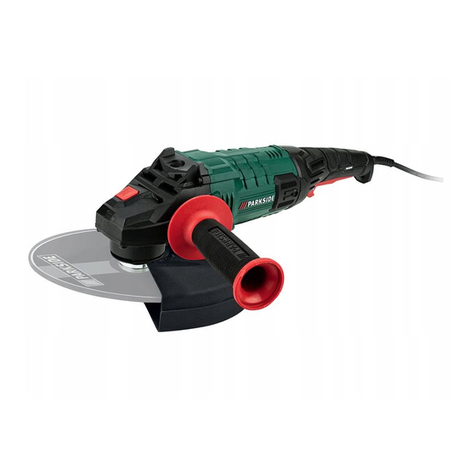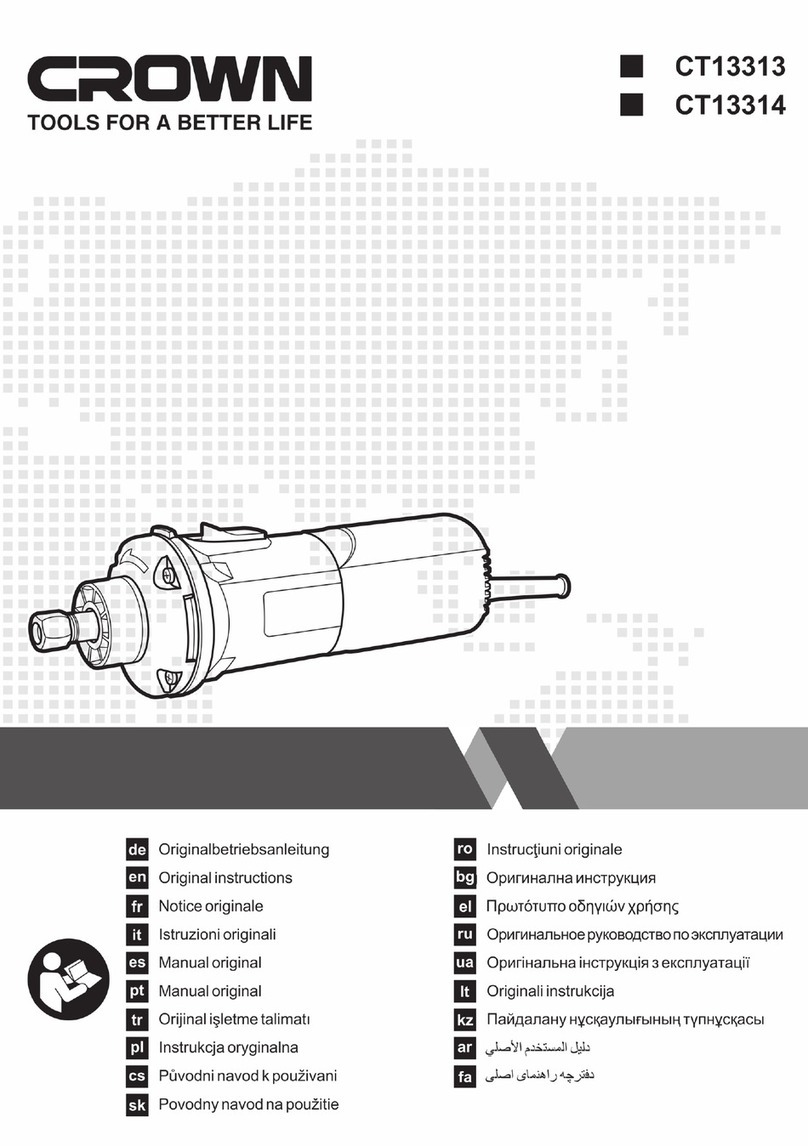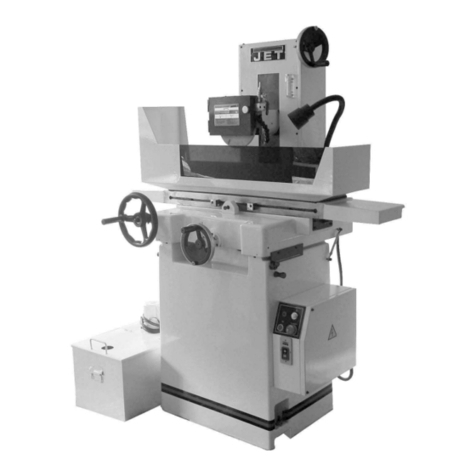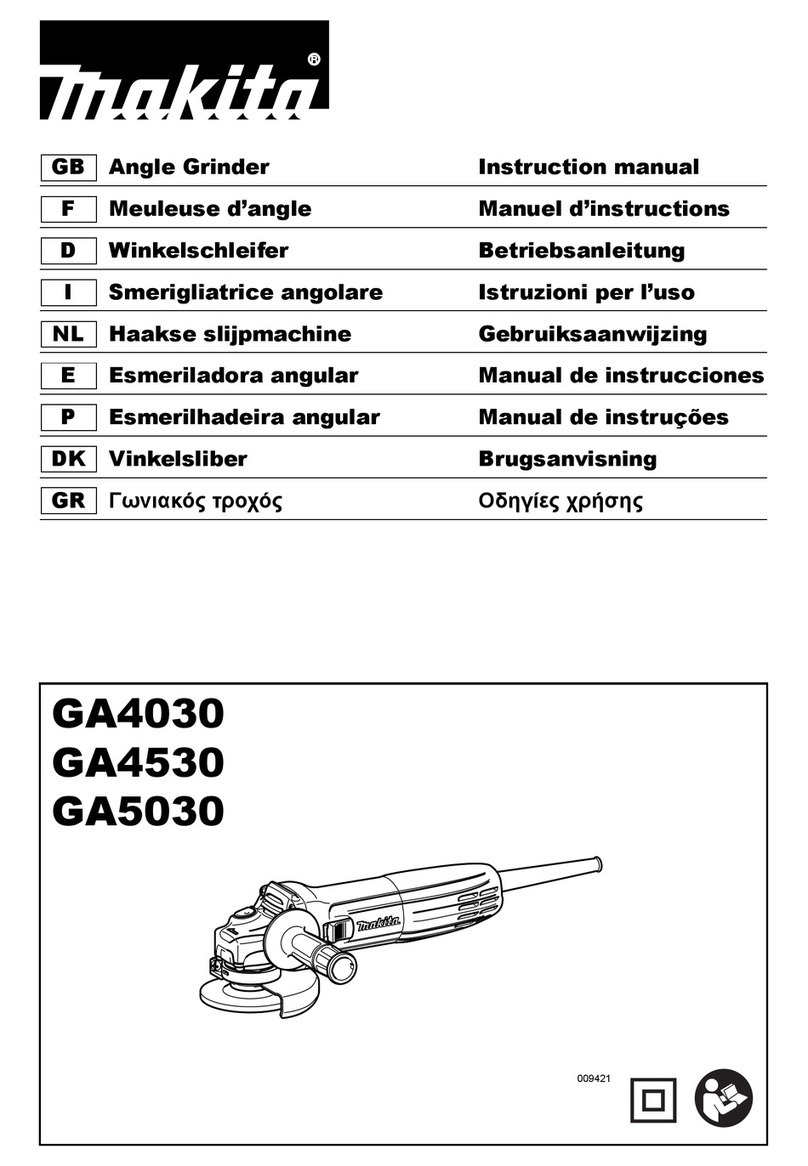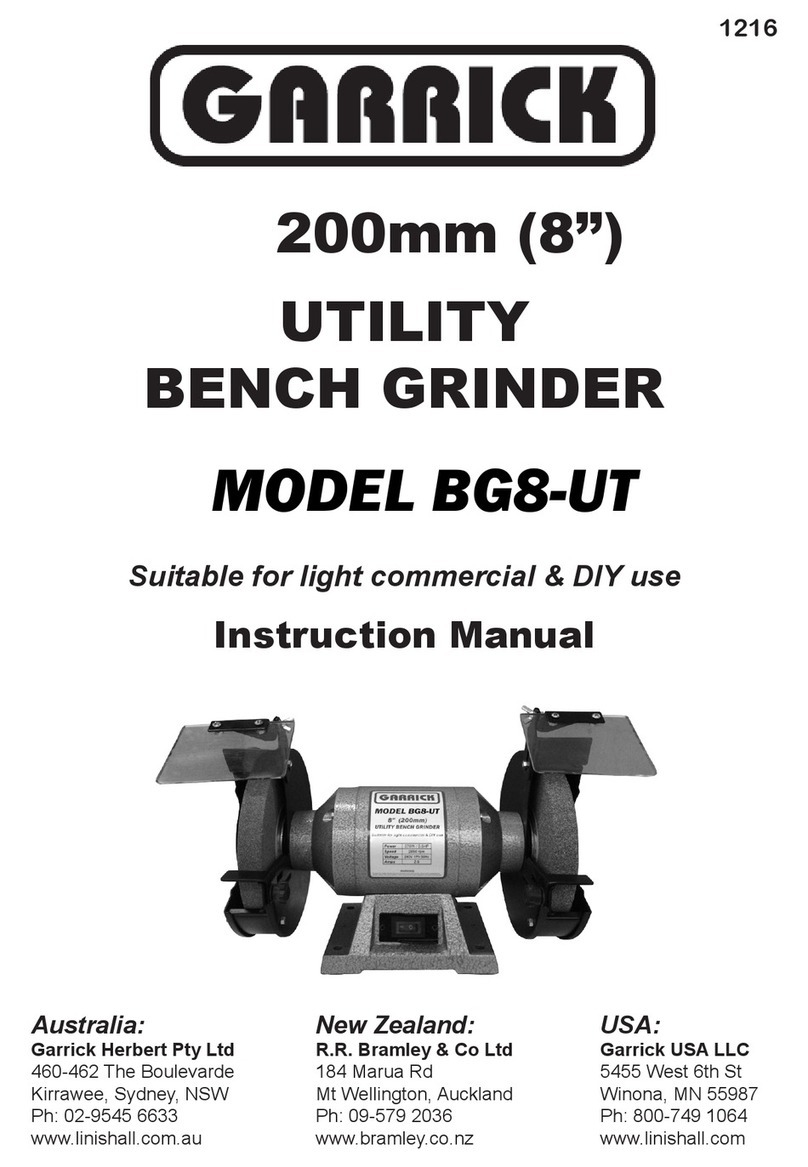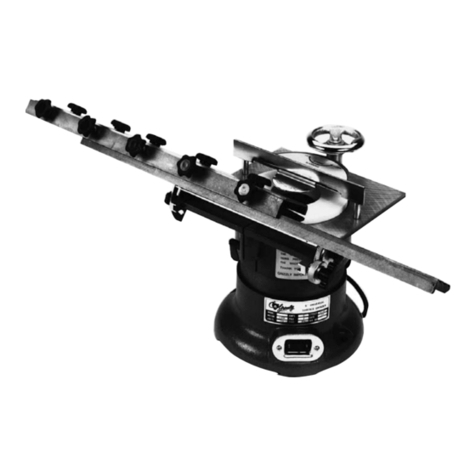
6
ENGLISH
Safety instructions
When using power tools, always observe the
safety regulations applicable in your country
to reduce the risk of fire, electric shock and
personal injury.
Read all of this manual carefully before operating
the tool.
Save this manual for future reference.
General
1 Keep work area clean
Cluttered areas and benches can cause accidents.
2 Consider work area environment
Do not expose the tool to rain. Do not use the tool
in damp or wet conditions. Keep the work area
well lit (250 - 300 Lux). Do not use the tool where
there is a risk of causing fire or explosion, e.g. in
the presence of flammable liquids and gases.
3 Keep children away
Do not allow children, visitors or animals to come
near the work area or to touch the tool or the
mains cable.
4 Dress properly
Do not wear loose clothing or jewellery, as these
can be caught in moving parts. Wear protective
hair covering to keep long hair out of the way.
When working outdoors, preferably wear suitable
gloves and non-slip footwear.
5 Personal protection
Always use safety glasses. Use a face or dust
mask whenever the operations may produce
dust or flying particles. If these particles might
be considerably hot, also wear a heat-resistant
apron. Wear ear protection at all times.
6 Guard against electric shock
Prevent body contact with earthed surfaces
(e.g. pipes, radiators, cookers and refrigerators).
When using the tool under extreme conditions
(e.g. high humidity, when metal swarf is being
produced, etc.), electric safety can be improved
by inserting an isolating transformer or a (FI)
earth-leakage circuit-breaker.
7 Do not overreach
Keep proper footing and balance at all times.
8 Stay alert
Watch what you are doing. Use common sense.
Do not operate the tool when you are tired.
9 Secure workpiece
Use clamps or a vice to hold the workpiece. It is
safer and it frees both hands to operate the tool.
10 Connect dust extraction equipment
If devices are provided for the connection of dust
extraction and collection facilities, ensure that
these are connected and properly used.
11 Remove adjusting keys and wrenches
Always check that adjusting keys and wrenches
are removed from the tool before operating
the tool.
12 Extension cables
Before use, inspect the extension cable and
replace if damaged. When using the tool
outdoors, only use extension cables intended for
outdoor use and marked accordingly.
13 Use appropriate tool
The intended use is described in this instruction
manual. Do not force small tools or attachments
to do the job of a heavy-duty tool. The tool will
do the job better and safer at the rate for which it
was intended. Do not force the tool.
Warning! The use of any accessory or
attachment or performance of any operation
with this tool other than those recommended
in this instruction manual may present a risk of
personalinjury.
14 Check for damaged parts
Before use, carefully check the tool and mains
cable for damage. Check for misalignment and
seizure of moving parts, breakage of parts,
damage to guards and switches and any other
conditions that may affect its operation. Ensure
that the tool will operate properly and perform
its intended function. Do not use the tool if any
part is damaged or defective. Do not use the tool
if the switch does not turn it on and off. Have
any damaged or defective parts replaced by an
authorised DEWALT repair agent. Never attempt
any repairs yourself.
15 Unplug tool
Switch off and wait for the tool to come to a
complete standstill before leaving it unattended.
Unplug the tool when not in use, before
changing any parts of the tools, accessories or
attachments and before servicing.

